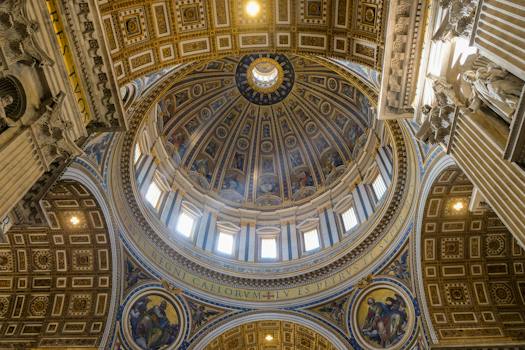

-
Table of Contents
Uncover the spirit of resilience and embrace the renaissance in the captivating city of Dresden.
Introduction
Resilience and Renaissance: Exploring the City of Dresden
Dresden, the capital city of the German state of Saxony, is a place that beautifully embodies both resilience and renaissance. With a rich history dating back centuries, Dresden has experienced its fair share of challenges and triumphs, making it a fascinating destination for explorers and history enthusiasts alike. From its remarkable architectural wonders to its vibrant cultural scene, Dresden offers a unique blend of old-world charm and modern vitality. In this article, we will delve into the captivating story of Dresden, highlighting its resilience in the face of adversity and its renaissance as a thriving cultural hub.
The Historical Significance of Dresden: A Journey through Resilience and Renaissance
Resilience and Renaissance: Exploring the City of Dresden
The historical significance of Dresden is a testament to the city's journey through resilience and renaissance. Situated in eastern Germany, Dresden has a rich and complex history that has shaped its identity and cultural heritage. From its origins as a medieval trading hub to its destruction during World War II and subsequent reconstruction, Dresden has emerged as a symbol of resilience and a thriving center of art and culture.
Dresden's history dates back to the 12th century when it was founded as a market settlement. Over the centuries, it grew into a prosperous city, attracting merchants and craftsmen from all over Europe. The city's strategic location on the Elbe River made it a vital trading center, connecting eastern and western Europe. This period of prosperity is reflected in the city's stunning architecture, with grand palaces, churches, and public buildings that showcase the wealth and power of Dresden's rulers.
However, Dresden's fortunes took a dramatic turn during World War II. In February 1945, the city was heavily bombed by Allied forces, resulting in the near-total destruction of its historic center. The devastation was immense, with iconic landmarks such as the Frauenkirche reduced to rubble. The loss of Dresden's cultural heritage was a tragedy felt not only by its residents but also by the world.
Yet, in the face of such destruction, Dresden demonstrated remarkable resilience. The city's citizens, determined to rebuild their beloved home, embarked on a monumental task of reconstruction. The process was painstaking and required meticulous attention to detail, as architects and craftsmen worked tirelessly to recreate the city's historic buildings using original plans and materials. The restoration of the Frauenkirche, completed in 2005, stands as a symbol of Dresden's resilience and determination to preserve its cultural heritage.
Today, Dresden is a vibrant city that seamlessly blends its rich history with modernity. Visitors can explore the meticulously reconstructed historic center, known as the Altstadt, and marvel at the architectural wonders that have been restored to their former glory. The Zwinger Palace, with its stunning baroque architecture, is a must-see, as is the Semperoper, one of the world's most renowned opera houses. The Altmarkt, Dresden's central square, is a bustling hub of activity, with shops, cafes, and street performers adding to its lively atmosphere.
Beyond its architectural treasures, Dresden is also a cultural hub. The city is home to numerous museums and galleries, showcasing a diverse range of art and artifacts. The Albertinum, for example, houses an extensive collection of modern and contemporary art, while the Green Vault in the Royal Palace displays an exquisite collection of jewelry and precious objects. Dresden's cultural scene is further enriched by its annual festivals and events, such as the Dresden Music Festival and the Dresden Film Festival, which attract artists and performers from around the world.
In conclusion, the historical significance of Dresden is a testament to the city's journey through resilience and renaissance. From its origins as a medieval trading hub to its destruction during World War II and subsequent reconstruction, Dresden has emerged as a symbol of resilience and a thriving center of art and culture. Today, visitors can explore the meticulously reconstructed historic center and immerse themselves in the city's vibrant cultural scene. Dresden's story is one of resilience, reminding us of the power of human determination and the enduring spirit of a city.
Architectural Marvels of Dresden: A Testament to Resilience and Renaissance

Resilience and Renaissance: Exploring the City of Dresden
Dresden, the capital city of the German state of Saxony, is a city that has witnessed both the depths of destruction and the heights of rebirth. Known for its architectural marvels, Dresden stands as a testament to resilience and renaissance.
One cannot discuss the architectural wonders of Dresden without acknowledging the devastating events of World War II. In February 1945, the city was heavily bombed, reducing much of its historic center to rubble. The destruction was immense, and it seemed as though Dresden's architectural heritage was lost forever.
However, the people of Dresden refused to let their city remain in ruins. In the years following the war, a massive reconstruction effort took place, with the goal of restoring the city to its former glory. This effort was not without controversy, as some argued that the city should be left as a reminder of the horrors of war. Nevertheless, the determination to rebuild prevailed, and Dresden began its journey towards renaissance.
One of the most iconic symbols of Dresden's resilience is the Frauenkirche, or Church of Our Lady. This stunning Baroque church was originally built in the 18th century and was considered one of the most beautiful Protestant churches in Europe. Sadly, it was reduced to a pile of rubble during the bombing of Dresden. However, in a remarkable feat of engineering and determination, the Frauenkirche was painstakingly reconstructed using original plans and materials. Today, it stands as a symbol of hope and reconciliation, a shining example of Dresden's ability to rise from the ashes.
Another architectural marvel that showcases Dresden's resilience is the Zwinger Palace. Built in the 18th century, this grand complex was severely damaged during the war. However, it has since been meticulously restored to its former glory. The Zwinger Palace is a masterpiece of Baroque architecture, with its ornate facades, beautiful gardens, and impressive collection of art and artifacts. It serves as a reminder of Dresden's rich cultural heritage and its ability to preserve and celebrate its past.
The Semperoper, or Semper Opera House, is yet another architectural gem that has been restored to its former splendor. This magnificent opera house, designed by Gottfried Semper, was destroyed during the bombing but was rebuilt in the years following the war. Today, it is considered one of the most beautiful opera houses in the world, with its stunning facade and opulent interior. The Semperoper is not only a testament to Dresden's resilience but also a vibrant cultural hub, hosting world-class performances that attract visitors from around the globe.
Dresden's architectural marvels are not limited to its historic center. The city's modern architecture also deserves recognition. The New Town Hall, with its striking glass dome, and the transparent UFA Cinema Center are just a few examples of the city's contemporary architectural achievements. These buildings seamlessly blend with the historic fabric of Dresden, creating a harmonious balance between old and new.
In conclusion, Dresden's architectural marvels stand as a testament to resilience and renaissance. The city's ability to rebuild and restore its historic treasures after the devastation of war is truly remarkable. From the Frauenkirche to the Zwinger Palace and the Semperoper, Dresden's architectural wonders are a source of pride and inspiration. Whether exploring the historic center or admiring the modern structures, visitors to Dresden are sure to be captivated by the city's rich architectural heritage and its enduring spirit.
Cultural Revival in Dresden: Celebrating Resilience and Renaissance
Resilience and Renaissance: Exploring the City of Dresden
Dresden, the capital city of the German state of Saxony, has a rich history that spans centuries. From its humble beginnings as a small fishing village to its transformation into a cultural and artistic hub, Dresden has experienced both triumph and tragedy. Today, the city stands as a testament to resilience and rebirth, with its vibrant cultural scene and architectural marvels.
One cannot discuss the cultural revival in Dresden without acknowledging the devastating events of World War II. The city, once known as the "Florence on the Elbe" due to its stunning architecture and art collections, was heavily bombed during the war. The historic city center, including the iconic Frauenkirche, was reduced to rubble. The destruction was a blow to the city's cultural heritage, but it also sparked a determination to rebuild and restore.
In the aftermath of the war, Dresden embarked on a journey of reconstruction and revival. The restoration of the Frauenkirche, which had been left in ruins for decades, became a symbol of hope and resilience. The painstaking process of rebuilding the church, using original stones whenever possible, was a testament to the city's commitment to preserving its cultural heritage.
Today, the Frauenkirche stands proudly in the heart of Dresden, its magnificent dome a symbol of the city's rebirth. It serves as a place of worship, a memorial to the war's victims, and a reminder of the power of resilience. Visitors from around the world come to marvel at its beauty and to pay homage to the city's history.
But Dresden's cultural revival extends beyond the Frauenkirche. The city is home to numerous museums and art galleries that showcase its rich artistic heritage. The Albertinum, for example, houses an extensive collection of modern art, while the Zwinger Palace is renowned for its Baroque architecture and world-class art collections.
In recent years, Dresden has also become a center for contemporary art and music. The Kunsthofpassage, a collection of courtyards in the Neustadt district, is a vibrant hub for local artists and designers. Its colorful facades and unique installations have turned it into a must-visit destination for art enthusiasts.
The city's music scene is equally impressive, with the Semperoper opera house being a highlight. Known for its stunning architecture and world-class performances, the Semperoper attracts opera lovers from far and wide. The Dresden Philharmonic Orchestra, one of Germany's oldest orchestras, also calls the city home, further cementing Dresden's reputation as a cultural capital.
Dresden's cultural revival is not limited to the arts. The city also celebrates its rich culinary traditions, with numerous restaurants and cafes offering a taste of Saxony's gastronomic delights. From hearty Saxon dishes like Sauerbraten and Quarkkeulchen to delicate pastries and cakes, Dresden's food scene is a reflection of its diverse cultural heritage.
In conclusion, Dresden's cultural revival is a testament to the city's resilience and determination to preserve its heritage. From the restoration of the Frauenkirche to the vibrant art and music scene, Dresden has emerged as a cultural capital that celebrates both its past and its future. Visitors to the city are treated to a journey through history, art, and gastronomy, making Dresden a must-visit destination for those seeking a taste of resilience and renaissance.
Q&A
1. What is the concept of resilience in the context of Dresden?
Resilience in the context of Dresden refers to the city's ability to recover and adapt in the face of challenges, such as the destruction caused by World War II and subsequent political changes.
2. How has Dresden demonstrated resilience throughout its history?
Dresden has demonstrated resilience by rebuilding and restoring its historic landmarks, such as the Frauenkirche, after the devastating bombings of World War II. The city has also revitalized its economy and cultural scene, attracting tourists and investments.
3. What is the significance of the Renaissance in Dresden?
The Renaissance period in Dresden, particularly during the reign of Augustus the Strong, marked a time of cultural and artistic flourishing. It led to the construction of magnificent buildings, such as the Zwinger Palace, and the establishment of renowned art collections, making Dresden an important center of European culture.
Conclusion
In conclusion, the city of Dresden embodies both resilience and renaissance. Despite facing significant destruction during World War II, Dresden has managed to rebuild and restore its architectural treasures, showcasing its resilience and determination. The city's rich cultural heritage, including its world-renowned art collections and historic landmarks, reflects a renaissance of creativity and innovation. Dresden's ability to overcome adversity and embrace its past while embracing the future makes it a truly remarkable city.












